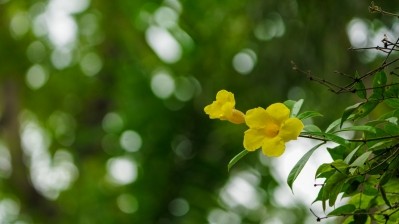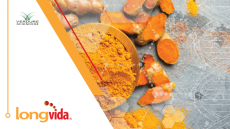‘Beyond reckless’: Online weight loss supplements found to contain toxic Yellow Oleander

The products were purchased online and analyzed after the New Jersey Poison Information and Education System (NJPIES) was alerted to serious adverse events in September 2022 presented by a young child who had ingested a Mexican Tejocote Root product purchased by its mother for weight loss. After emergency treatment, the child recovered.
Tejocote (Crataegus mexicana) root is promoted via social media for weight loss and is readily available from online retailers.
In December 2022, medical and analytical experts from NJPIES, Rutgers New Jersey Medical School, and Flora Research Laboratories purchased 10 products labeled as tejocote and marketed as weight loss supplements and analyzed them using ultra-high pressure liquid chromatography–accurate mass-time of flight mass spectrometry.
The data, published in Centers for Disease Control and Prevention's Morbidity and Mortality Weekly Report, showed that none of the products contained any tejocote root, and nine out of the ten actually contained yellow oleander (Cascabela thevetia), a highly toxic plant native to Mexico and Central America.
“These readily available dietary supplements, upon testing, appeared to be mislabeled,” wrote the researchers. “Instead, they contained a toxic substance of concern to both clinicians and public health officials.”
“For public health officials, this is concerning because these supplements contain a highly toxic substance and are readily available from multiple retailers. Future prevention efforts need to include reporting products such as these to FDA and alerting retailers who might be unknowingly selling these hazardous products.”
FDA warns about Yellow Oleander
Earlier this month, the US Food and Drug Administration issued a warning about the presence of yellow oleander in weight loss products labeled as Nuez de la India.
“Ingestion of yellow oleander can cause neurologic, gastrointestinal and cardiovascular adverse health effects that may be severe, or even fatal. Symptoms may include nausea, vomiting, dizziness, diarrhea, abdominal pain, cardiac changes, dysrhythmia, and more,” noted the FDA.
Yellow oleander contains thevetin B, a steroid compound from the cardenolide family that also includes digoxin.
“Remove these poisonous products”
James Kababick, Director of Flora Research Laboratories, LLC, and one of the co-authors on the CDC report, told us that there was a 2019 report in the Journal of Medical Toxicology of a 16-year-old girl with poisoning symptoms who became sick after consuming a weight loss supplement labeled as tejocote root.
Additionally, a 2021 paper in Food Additives & Contaminants: Part A reported that analysis of a popular Mexican supplement brand labeled as tejocote root actually contained yellow oleander, as determined by DNA barcoding and chemical profiling.
“It is my hope that online retailers police their sites to remove these poisonous products before any more harm is done,” said Kababick.
“Beyond reckless”
Commenting independently on the new findings, Stefan Gafner, PhD, Chief Science Officer of the American Botanical Council and Director of the ABC-AHP-NCNPR Botanical Adulterants Prevention Program (BAPP), told NutraIngredients-USA that this issue had not been on his radar screen until this publication. “The main question I had was, why would anyone adulterate Mexican hawthorn with yellow oleander, a known cardiotoxic ingredient?” he said.
Having looked into it further, Dr Gafner referenced the 2021 paper that reported the issue, and noted that the authors stated: “A dietary supplement containing yellow oleander (codo de fraile or yóyotl) was a commercially available weight-loss product on the US-Mexico border.”
“This may be based on a small number of studies showing that using the cardiac glycoside digoxin can lead to weight loss,” said Dr Gafner. “So, it appears that the manufacturer intentionally adulterated these products in order to provide a weight loss effect by using yellow oleander instead of Mexican hawthorn. However, it does not make any business sense to substitute hawthorn with a toxic ingredient, as selling yellow oleander as a dietary supplement was bound to end up with hospitalizations. This is beyond reckless.
“The vast majority of adulteration cases that the ABC-AHP-NCNPR Botanical Adulterants Prevention Program (BAPP) reports do not represent a safety issue, so this case with yellow oleander is unusual,” added Dr Gafner. “But it once more illustrates how crucial identity testing of dietary supplement ingredients is. It’s a point that we try to bring home to our community through the educational efforts of BAPP.
“And it highlights the importance of the BAPP Best Practices SOP for the Disposal/Destruction of Irreparably Defective Articles – since yellow oleander is an ingredient that should not -- under any circumstance -- end up back in the dietary supplement ingredient supply chain.
“It appears as if adulteration of Mexican hawthorn with yellow oleander has been around for a few years. I can only hope that this time will be the last time we hear or read about it.”
Source: Morbidity and Mortality Weekly Report
September 15, 2023 / 72(37);1016–1017
“Labeled as Tejocote (Crataegus mexicana) Root, Substituted with Yellow Oleander (Cascabela thevetia) — United States, 2022”
Authors: N.Berland, J. Kababick, C. Santos, D.P. Calello















